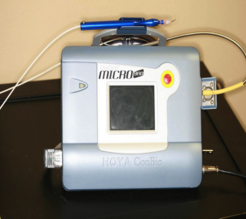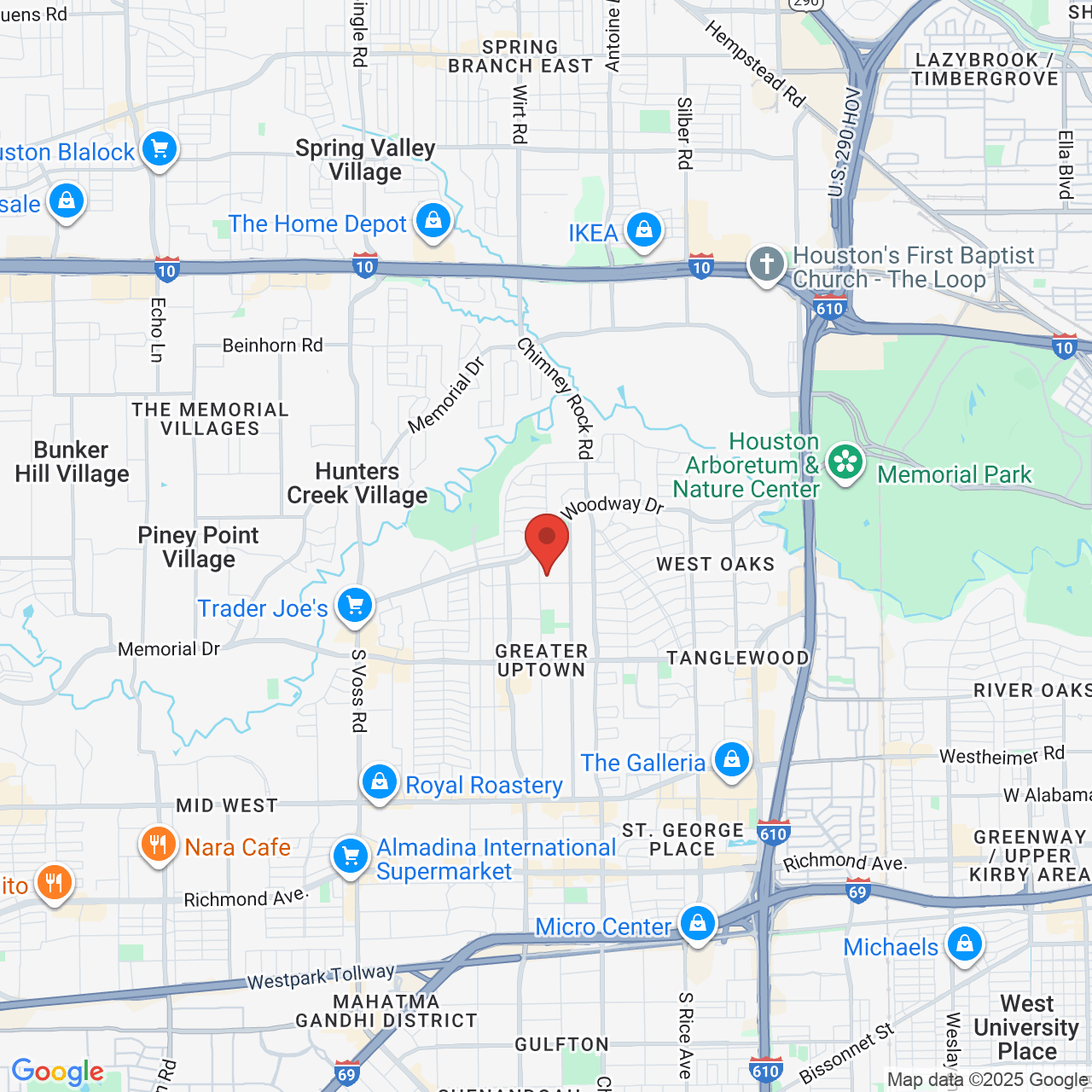Renew a Damaged Smile with Restorative Dentistry
Restore Your Smile
 As people age, so too do their teeth and dental work. For this reason, many individuals can be helped through restorative dentistry at our Houston practice. At the Cosmetic and Restorative Dental Practice of Dr. Jon Marc Van Slate, we are pleased to offer restorative dentistry procedures of the highest quality to our patients.
As people age, so too do their teeth and dental work. For this reason, many individuals can be helped through restorative dentistry at our Houston practice. At the Cosmetic and Restorative Dental Practice of Dr. Jon Marc Van Slate, we are pleased to offer restorative dentistry procedures of the highest quality to our patients.
Restorative Dentistry Overview
Restorative dentistry addresses all dental issues pertaining to the health, function, and appearance of the teeth, jaw, and gums. Whether a new dental issue arises, or prior dental work needs to be repaired or redone, Dr. Van Slate and our team can help through the use of restorative dentistry. No dental issue is too big or too small for the Cosmetic and Restorative Dental Practice of Dr. Van Slate.
Restorative Dentistry Procedures
There are many restorative dentistry treatments available at our Houston practice, including:
- Dental Implants
- Inlays and Onlays
- Dental Bridges
- Dental Crowns
- Dentures and Partials
- Full Mouth Restorations
- Extractions
- Periodontal Treatment
- Root canals
Onlays And Inlays
Onlays and inlays have become the state of the art in conservatively and cosmetically restoring the teeth in the back of the mouth. These restorations are ideal when more than half of a tooth’s biting surface is damaged. We place an onlay when a typical dental “filling” would be too large to support the tooth, and/or a crown would require too much tooth removal. Inlays and onlays are especially beneficial in helping to predictably maintain the tooth contact between adjacent teeth.
These restorations can be made of porcelain, gold or composite resin. However, with our ability to bond and seal porcelain directly to the tooth, porcelain has become increasingly popular due to its strength and color, which can match the natural color of the tooth. Onlays and inlays are often used to replace older silver amalgam fillings as well. Silver amalgam fillings contain mercury and tend to weaken the enamel over time. Porcelain restorations actually bond to the enamel and therefore support the remaining tooth structure.
Crowns
Crowns are placed on teeth that have been broken or weakened due to decay or fracture. The crown serves to cover, protect and support the tooth. Crowns enable us to save teeth that would otherwise be lost.
With our improved lab techniques and newer porcelains, the dentistry we can now provide is virtually undetectable. Patients should expect their crowns and dental restorations to look and feel like natural teeth. We use metal-free, state of the art crowns made of E-max, Lava and Procera porcelains. We are now able to provide crowns with no “dark metal margins”, common in older crown designs.
As with any dental procedure, the labs we work with must be the best. We are pleased to partner with Aesthetic Dental Vision Lab and Microdental Labs for our dental work. Both labs are recognized in their field as some of the best dental labs in the US. They are unique in that they have trained master ceramists who help Dr. Van Slate deliver high quality dental restorations that are both beautiful and predictable. There is a significant difference in the quality of crowns, veneers and bridges done by a trained master ceramist who has the dedicated the time and effort to be leaders in their craft, and labs who are not.
Dental Bridge
Before implants, a dental bridge was the traditional way to replace a missing tooth/teeth. Missing teeth should always be replaced if possible. Since all of your teeth are important for speaking, chewing and maintaining proper alignment of other teeth, missing teeth should be replaced. Missing teeth are a common cause of tooth shifting, periodontal disease, TMJ symptoms from lack of support of the jaw joints and often contribute to a person looking older by creating the appearance of collapsed and worn down teeth. A bridge also helps support the lips and cheek.
A bridge is a restoration that attaches an artificial tooth to the adjacent natural teeth. The adjacent natural teeth do require enamel removal like a crown preparation. The bridge is then permanently cemented to the adjacent teeth. A dental fixed bridge is not removable.
Dentures and Partials
Dentures are removable appliances recommended when a person is missing all of their teeth in the either the upper or lower arch. Dentures are designed to replace missing teeth to give you the appearance and function of natural teeth. Dentures are custom made with a plastic acrylic resin that is comfortable and durable. The denture is dependent on the bone and gum tissue to give it support. Over time, the bone will change shape and may lose height. Therefore, the denture will require a procedure called a reline so that the denture will fit properly.
Sometimes, a person’s gum tissue may not be adequate to support a denture and the denture may move and feel loose. In this circumstance, a person may need to use denture adhesives to stabilize the denture. Dental implants may also be used as a great way to stabilize a denture. Attachments are made in the denture that allows it to “snap” on the implants to provide better comfort and fit.
Immediate dentures are placed the same day that teeth have been extracted, so that the patient will not have to go without the appearance of teeth. Immediate dentures will need to be relined after the tissues completely heal, which will ensure the proper fit of the denture.
Partials are also removable appliances that replace missing teeth. Partials can be made of a silver metal with acrylic plastic teeth or they can be made all in a durable plastic acrylic. Partials are designed with clasps that attach to the remaining teeth to give it support. Usually, partials are more stable than full dentures because the remaining natural teeth help to give it support. Although partials don’t provide the natural feel of implant restorations or permanent bridges, they do allow much needed support to the remaining natural teeth to help prevent the problems associated with tooth shifting, bite collapse and TMJ symptoms.
Root Canals
A root canal procedure is needed when there is irreversible damage to the nerve within the tooth. The most common reasons for a root canal are deep decay, tooth fracture, trauma to the tooth or the tooth breaks exposing the nerve. When the nerve in the tooth is irreversibly damaged, it will not heal on its own and may result in infection, swelling and pain that may lead to a dental abscess.
Symptoms of nerve damage may include increased hypersensitivity to cold and hot temperatures, consistent pain when chewing on a particular tooth, constant pain ranging from a dull ache to intense discomfort and/or swelling of the gingival tissue around the tooth.
There have been many amazing improvements in the techniques for root canal treatment that have made significant differences in their comfort and overall benefits. Dr. Van Slate can usually complete a root canal with local anesthesia in less than an hour. During a root canal procedure, the damaged nerve inside the tooth is carefully removed and then medication is placed inside the canals to sterilize and promote healing of the tooth. For proper healing and to eliminate discomfort, it is common to be placed on antibiotics during the root canal procedure.
Periodontal Treatment
In recent years, research has confirmed a very high link with periodontal disease and other health related problems such as cardiovascular disease. In fact, the bacteria commonly found in periodontal disease is the same found with heart disease. On our patient’s initial dental visit and on every dental check-up/cleaning visit, we screen and check for periodontal disease. Periodontal disease can be virtually eliminated with regular dental cleanings and good home care.
Because it is so important to our patient’s general health, our practice is very aggressive at treating the symptoms of periodontal disease. Gingivitis and the early stages of periodontal disease are rountinely treated in our office, since the disease can progress to very harmful levels that can wreak havoc on the mouth if untreated. For patients who require more extensive periodontal therapy, we will recommend a periodontal specialist who can help.
The Benefits of Lasers with Dental Cleanings
 The dental profession has known for years about the benefits of using lasers to eliminate bacteria in the gum tissue surrounding the teeth. Extensive research and studies prove the substantial benefits lasers have in preventing gingival inflammation, bleeding and periodontal disease.
The dental profession has known for years about the benefits of using lasers to eliminate bacteria in the gum tissue surrounding the teeth. Extensive research and studies prove the substantial benefits lasers have in preventing gingival inflammation, bleeding and periodontal disease.
In late 2010, the Texas State Board approved the use of lasers for routine hygiene procedures, like dental cleanings and in treating gum disease. Both Charlotte and Alexandrea, our dental hygienists, have been trained and certified in the use of dental lasers for hygiene procedures, thus using lasers for our dental hygiene appointments has become routine in our practice.
Because we now understand that the bacteria involved in gingival inflammation and periodontal disease has been associated with several diseases, like heart disease and diabetes, we wanted to make sure that our patients received the best care possible.
Lasers give us amazing benefits in caring for our patients that we have never been able to enjoy before. With lasers, we are now able to predictably eliminate bacteria in the gum tissue to control inflammation and bleeding like never before. We are also able to reduce and eliminate periodontal pockets conservatively, often without periodontal surgery.
Since this is a new treatment option for most of you, our goal is to educate you on the benefits of using the laser, and to make it as affordable as possible.
Dental Extractions
Since 1989, Dr. Van Slate has been routinely extracting teeth. He has a wealth of experience in all aspects of dental surgery. We will refer our patients to oral surgeons if general anesthesia is desired.
With the emergence of dental implants, we now routinely place bone graft material to extraction sites where implants are to be placed. The graft helps to assure that bone will be available for implant placement.
Oral Conscious Sedation
For patients who have apprehension or anxiety, Dr. Van Slate is certified to administer oral conscious sedation and nitrous oxide to his patients. Oral conscious sedation usually involves taking a pill prior to dental treatment that will help to make the dental visit more comfortable. Oral conscious sedation is not like general anesthesia. The patient is awake and can still communicate during the entire dental procedure. These patients will need someone to drive them home after the procedure.
Learn More about Restorative Dentistry
If you are having tooth pain, or you have prior dental work that needs to be repaired or replaced, then you may be an excellent candidate for restorative dentistry. At the Cosmetic and Restorative Dentistry Center of Dr. Van Slate, we are pleased to offer our patients all of the many benefits that restorative dentistry has to offer. So if you are in the Houston area and considering restorative dentistry, then contact us to schedule your personal consultation.
